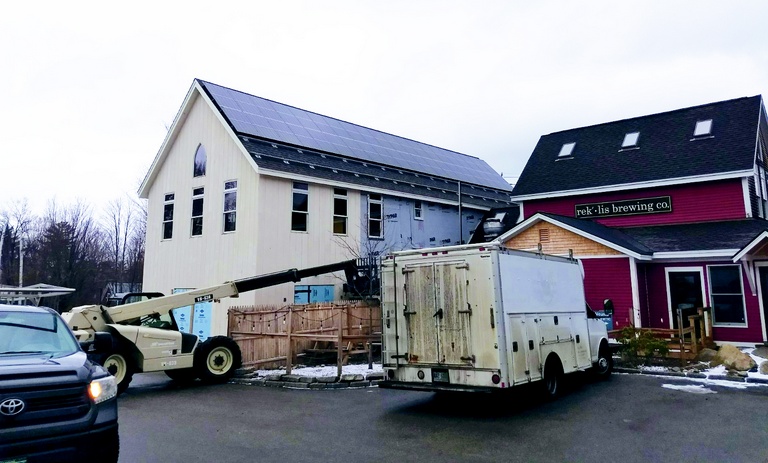George Harvey
The Covid-19 pandemic has had different effects on different industries. Some industries have been hit hard, and others found the time exceptionally profitable. We wanted to get a good idea of what is happening for the solar industry, and so we contacted Darren O’Meara, one of the managers of O’Meara Solar in Orange County, Vermont.
“We have done the most off-grid that we have ever done in a single season,” O’Meara said. “We have had a sort of market boom.” He described the systems as being on the large end for off-grid homes. They range from two to five kilowatts (kW).
The off-grid installations fell into two groups, and for two different reasons. One group has people in new homes in remote locations, far from the nearest grid connection. The cost of building electric lines to such places can be prohibitive. In the past some houses were not built because of the high cost of electricity.
Nowadays, the cost of solar power with batteries has fallen to the point that it is competitive even for homes that are relatively close to the grid, and it has turned remote areas into places that are attractive for building.
The Covid-19 pandemic has created a more immediate need for off-grid solar systems. Many people who have some extra money own cabins in rural New England. Many of these people live in areas that have been hit hard by the pandemic, and so they have been looking at alternative places to stay. It happens that Vermont has the lowest rates of infection and death from Covid-19 of any state (https://bit.ly/2HyHL4a). This makes Vermont an especially attractive place, especially for older people or those in other vulnerable health groups.
Because of this, many people are building off-grid solar systems for what had been cabins, with a view to spending much more time in them. We would hope that they are insulating and weather-proofing the cabins at the same time.
Where people select installations in the range of two to five kW depends largely on the size and use of the homes. For a single, rather frugal person who is heating with wood, two kW is often more than enough. For a family with a central heating system, five could be a better bet.
Asked about solar power in Vermont in general, O’Meara said it has declined since 2017, but he also said, “I don’t have a philosophy about why that is.” He did say that Vermont may be suffering a little from its own success, because the first flush of easily installed systems were all in place at just about the same time that solar power started picking up elsewhere.
One thing O’Meara wanted to make clear is that customers have to be prepared to deal with how off-grid solar systems are different from grid power. Straight grid power is rather easy to deal with. The utility supplies electricity and the customer pays for it. For the customer, things usually do not need much thought.
By contrast, an off-grid solar system requires a certain amount of attention. People have to understand such things as battery life and how they can improve it to get the best performance from their system. O’Meara recommends that people keep logs of such things as voltages and kWh readings on a daily basis. This is especially important because it means the person operating the system can notice any deviation from normal operation.
O’Meara said he uses Q Cell solar panels and LiFePO₄ batteries from Simpliphi or RELiON along with Magna-Sine inverters and Midnight charge controllers. He said he is reluctant to take on untried products until they are proven in the field.
It is clear that other installers have had different experiences with solar installations in the time of the pandemic. The question of whether the rate of installations has changed is tied to a number of factors. We might note that all U.S. electric capacity installed in June, July, and August was renewable, according to the Federal Energy Regulatory Commission. And 52% of what was installed in those months was solar.
O’Meara Solar’s website is www.omearasolar.com.










Leave a Reply